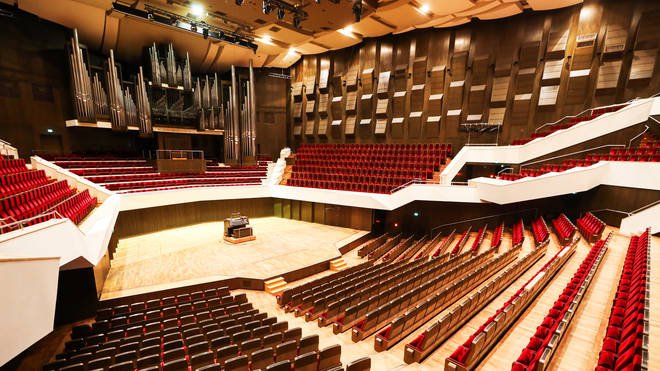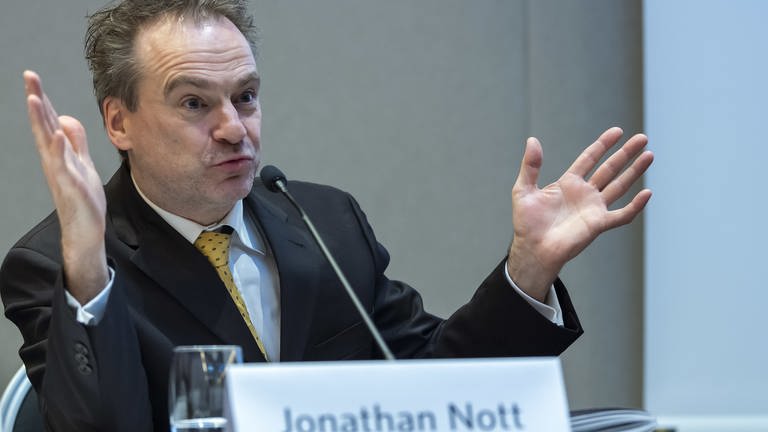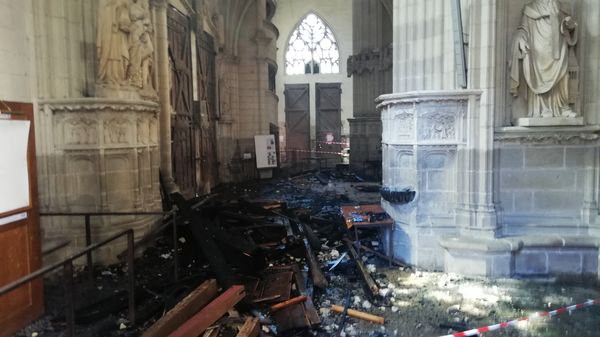Scientists invite 4,000 music fans to a live concert to assess spread of coronavirus

Scientists are giving volunteers tracking devices and bottles of fluorescent disinfectant to monitor how COVID-19 may spread – and could be prevented from spreading – at large indoor concerts.
German scientists are calling on 4,000 music fans to attend an indoor live music experiment in a bid to track and combat the spread of coronavirus at concerts.
Led by researchers from the Martin Luther University of Halle-Wittenberg, the project, titled Restart-19, invites participants aged 18-50 to attend a summer show featuring German soul-pop singer, Tim Bendzko, where potential transmission will be investigated.
Each volunteer will be given a face mask and small ‘contact tracer’ device to wear on a chain around their neck, which constantly measures each person’s movements and proximity to other members of the audience.
Following government advice to use hand sanitiser during the pandemic, the concertgoers will also be asked to clean their hands with a fluorescent disinfectant regularly – allowing scientists to scan the venue with UV lights after the show to identify areas most likely to spread the virus.
Konzert in Tokio mit Dirigent von der Festplatte
Die Idee des Tokyo Symphony Orchestra und ihres Chefs Jonathan Nott eröffnet neue Möglichkeiten. Falls es geeignete Aufnahmen des dirigierenden Karajan gibt, könnte dieser bald wieder als Dirigent zu erleben sein.
Am 18. Juli fand in der Tokyo Opera City Concert Hall das erste Konzert eines Orchesters mit einem Dirigenten in einer Videoaufzeichnung statt. Aufgezeichnet wurde der Brite Jonathan Nott (57), der aufgrund der japanischen Coronapandemie-Bestimmungen nicht selbst vor Ort sein konnte, um Dvořáks Sinfonie Nr. 8 mit dem Tokyo Symphony Orchestra zu dirigieren. Nach Presseangaben war es das weltweit erste Konzert, bei dem ein aufgezeichnetes Videodirigat zum Einsatz kam.

Concert in Tokyo with conductor from the hard drive
The idea of the Tokyo Symphony Orchestra and its chief Jonathan Nott opens up new possibilities. If there are suitable recordings of the conducting Karajan, this could soon be experienced again as a conductor.
On July 18, the first concert of an orchestra with a conductor in a video recording took place in the Tokyo Opera City Concert Hall. The Briton Jonathan Nott (57) was recorded, who could not be there due to the Japanese corona pandemic regulations to conduct Dvořák’s Symphony No. 8 with the Tokyo Symphony Orchestra. According to press reports, it was the first concert in the world to use a recorded video director.
Destruction du grand orgue de la Cathédrale de Nantes
Au micro de Classique Info, Le musicien évoque avec ferveur l’histoire remarquable de cet instrument qui, quatre siècles durant, aura échappé de justesse à la destruction : l’épreuve de la Révolution Française, l’explosion de la poudrière château des Ducs sous le règne de Napoléon, la Grande Guerre et les bombardements alliés de 1943-1944. Aussi a-t-il exprimé sa « consternation », deux jours après le feu qui s’est déclaré samedi 18 juillet au matin en trois points de l’édifice. « Après l’incendie de 1972, on s’est dit qu’il était absolument impossible d’avoir un nouvel incendie, toutes les précautions avaient été prises, une charpente en béton, les installations électriques sont refaites régulièrement, on était en totale confiance » explique-t-il. « C’est donc l’incompréhension qui régnait samedi matin »

Destruction of the great organ of Nantes Cathedral
At the microphone of Classique Info, the musician fervently evokes the remarkable history of this instrument which, for four centuries, narrowly escaped destruction: the ordeal of the French Revolution, the explosion of the powder magazine of the Dukes’ castle during Napoleon’s reign, the Great War and the Allied bombings of 1943-1944. He therefore expressed his “consternation” two days after the fire that broke out on the morning of Saturday 18 July at three points in the building. “After the 1972 fire, we told ourselves that it was absolutely impossible to have another fire, all precautions had been taken, a concrete structure, the electrical installations were regularly redone, we were in total confidence,” he explained. “So it was the lack of understanding that reigned on Saturday morning.
 BACK
BACK